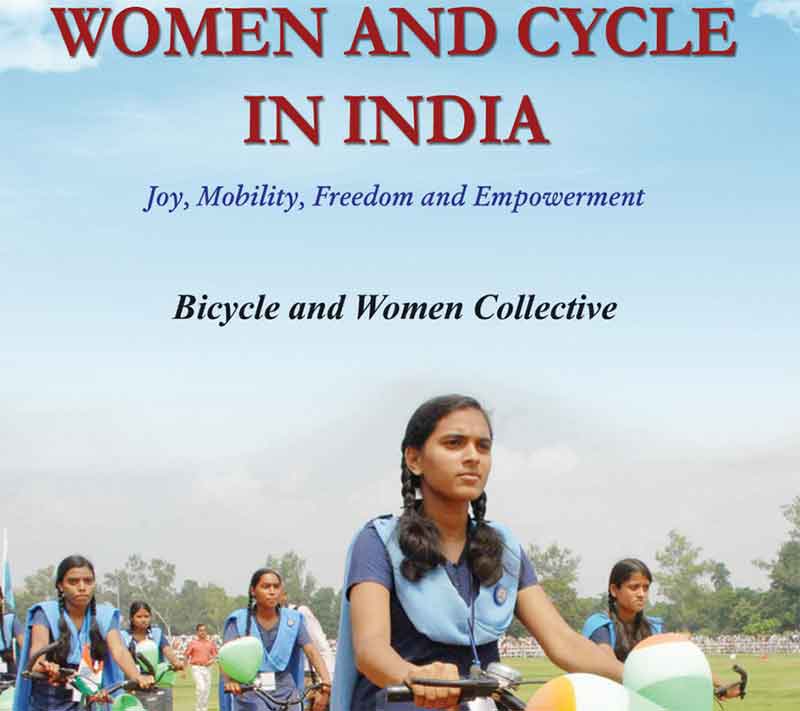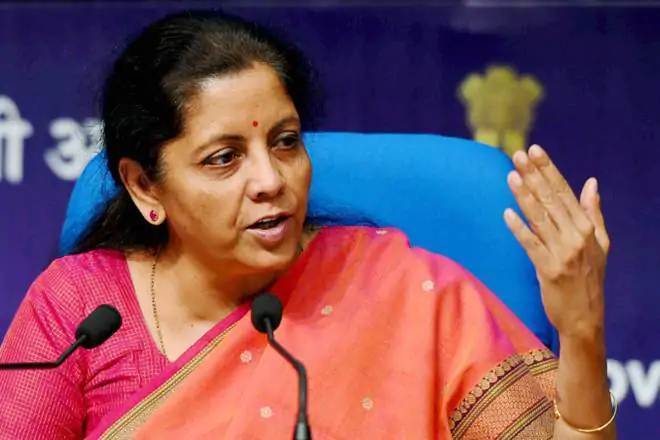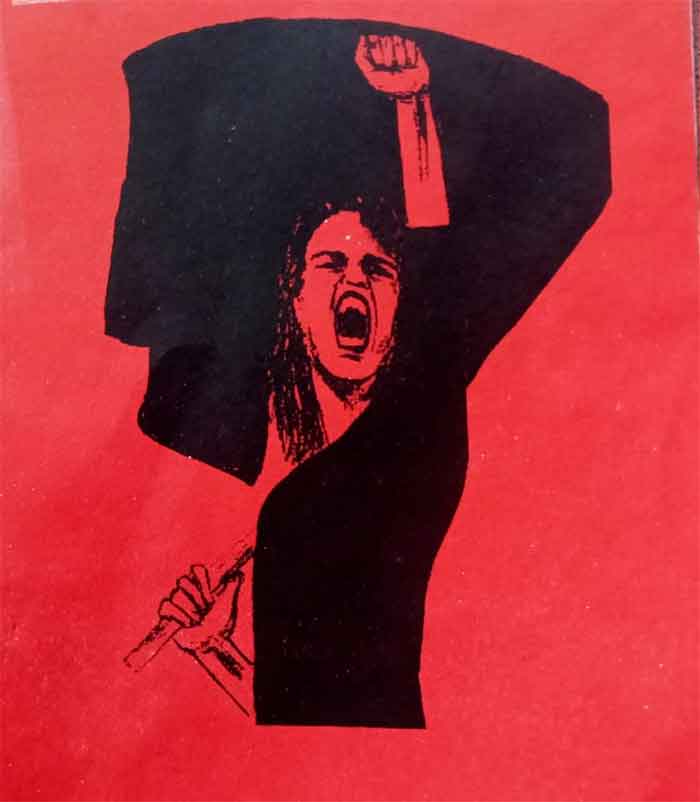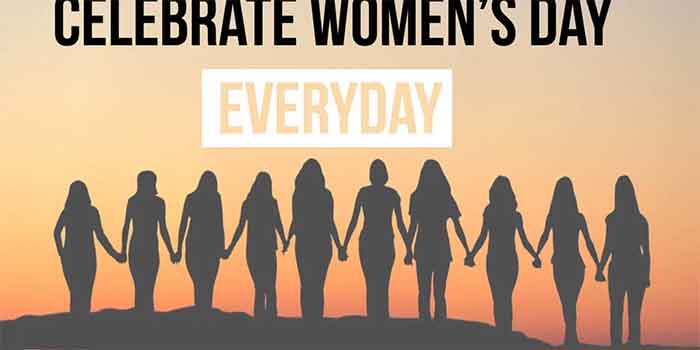
We all know that 8th March is observed as International Women’s Day. The UN also accepted this day in 1975 but they will never reveal the reason and the struggles behind the celebration of 8th March as International Women’s Day. They have even erased the word, “Working”, in order to forget the history of the 8th March. From the beginning of the women’s movement, there were basically two trends in the women’s movement. One was the liberal feminist movement, which represented a minority of women, who belonged to the elite sections. This didn’t represent the ideology of the working class and the oppressed people. The other one was the working women’s movement, which represented the majority of the women, who belonged to the working class.
First of all, we have to understand why the legacy of this liberal feminist movement is not much celebrated now. But the legacy of International Working Women’s Day is still celebrated. Even when the revolutionary forces are declining, day by day, the historical victory of the working women’s movement could attain a lot of achievements that the liberal feminist movement could not attain and can never attain. This legacy is not just because it represented the majority of the women. The primary reason behind that is the working class ideology, ie, communism, which was the first ideology that tried to scientifically understand the root cause of the oppression of women and its interlink with the socio-economic exploitation in the society, and at the same time, it also tried to define a path towards the liberation of women.
F. Engels’ book, “The Origin of Family, Private Property and State ” understood that the primitive communist society was a matriarchal society and there was no control or dominance of men over women. The child was recognised on the basis of their mother and not father. Family system didn’t exist. Also, society was not based on the concept of monogamy. It was a polyamorous society. It means that there was no scope for sexual subjugation of men by women. But when humans settled and started production, then the female became the first class, which was subjugated by another class, ie, by male. Quoting The German Ideology by Marx, which says, “The first division of labor is that between man and woman for the propagation of children.” Engels adds, “The first class opposition that appears in history coincides with the development of the antagonism between man and woman in monogamous marriage, and the first class oppression coincides with that of the female sex by the male.” With the onset of class division, beyond the families, that is, within the agrarian production, this domestic-slavery increased multifold to serve the purpose of exploitation of a man by man. By keeping women as tools for the production and reproduction of life and at the same time, human beings. Women were reduced to mere tools to fulfill the material needs like food and sex.
That’s why, the communist movement gave a clarion call for the “abolition of family” along with the call for the “abolition of private property”. The surplus extraction in families serves as one of the bases of the surplus extraction in the industries and the farmlands. This call was the broadest possible call to mobilize the women against patriarchy, at that time. That’s why, in my opinion, the particular character of the woman, being a worker, not just an industrial or agricultural but also a worker in her own family engaged in kitchen work for feeding the other members of family and at the same time, the worker to do 10 months of labor to produce a human being, in itself comes under the category of the oppressed. That means, women in itself are an oppressed class. We can’t imagine a communist society, in which women are enslaved. This is why the call for women’s liberation was always in consonance with the revolutionary working class movement. That’s the primary reason, due to which, the women stood up with the working class as a leading force in the revolution.
The decision to celebrate International Women’s Day came in the Second International Congress of Socialist Women. But at that time, 19th March was the date observed as Women’s Day. The date was chosen because the 1848 revolution in Germany took place on this date, in which voting rights for women was an important question. In 1913, the Working Women’s Day shifted from 19th March to 8th March. That year, the Russian working women came to the streets for the first time to observe women’s day. Two-three years later, women’s day didn’t give much push to the movement but in 1917, the February Revolution, which was initiated by the working women of Russia, led to the overthrow of the Tsarist rule and the political liberty of Russia from the dictatorial rule. As Kollontai remembers, “The women – some were workers, some were wives of soldiers – demanded “Bread for our children” and “The return of our husbands from the trenches”.”
Now, more than a century has passed since both the milestones. In 1975, the UN started observing International Women’s Day. The ruling class tries to hide the legacy of the revolutionary working class movement by removing the word “Working”. But a more important question is regarding the attitude of the communists towards the gender question in general and the family system in particular. It was told earlier that the legacy of liberal feminist movement is nothing compared to the legacy of the working women’s movement. But still, why is liberal feminism more influential in the modern feminist movement than the Marxist feminism?
This question can’t be dealt with a single answer. There are many reasons behind this. First of all, we always have a male lens while viewing the revolution. That’s why, in the name of working class unity, we have always subsided this gender question. We have often viewed it as a question that divides the working class. So, many comrades argued these questions will be settled after revolution. But do you think that without developing a conscious struggle against the oppressive family system, the men in a communist/socialist society can all of a sudden, leave the family privileges? Reading about the attitudes of the communists in a post-revolutionary society is necessary. Alexandra Kollontai wrote in one of her writings, “The old economic structure is disintegrating and with it the old type of marriage, but we cling to bourgeois lifestyles. We are ready to reject all the aspects of the old system and welcome the revolution in all spheres of life, only . . . don’t touch the family, don’t try to change the family! Even politically aware communists are afraid to look squarely at the truth, they brush aside the evidence which clearly shows that the old family ties are weakening and that new forms of economy dictate new forms of relationships between the sexes.”
We can see, in India, that the communist parties themselves are male-dominated. The PolitBuro may have one or two female members as a tokenism but mostly, the demands of the women society as a whole are not addressed by this minority due to their personal limitations and lack of bargaining power within the party. The male dominance within the communist movement is manifested in many ways. The communist circles lack female participation. If both spouses of a family are in the party, often when a male becomes a whole timer, the female becomes inactive from the party to suffice the family needs. The opposite side never happens. An angry young man attitude has been often perceived as a communist attitude in many places. If destruction of the patriarchal family system is one of the primary goals of the communists, then why don’t they practice this in their life? That’s why don’t they fight against the oppressive family system in their personal and political life? They fear that the male members in the party will be angry over it. To appease them, they make a compromise. This compromise never gets dissolved.
Here, every communist should understand one thing, that the gender question is neither a question whose settlement should be postponed till revolution nor it is a question to be raised merely by the women. Then the question comes, what is the role of men in the struggle against patriarchy? The struggle of men is against himself and the social conditions that created the “male consciousness”. Without a struggle against the male ego within oneself, without changing the patriarchal mode of thinking, men can’t fight against patriarchy.
In the current scenario, along with dealing with these internal contradictions, we should also focus on understanding the concrete conditions of India. That means the origin, development and the current scenario of patriarchy in India. First of all, I am not a good person to comment in detail on this. But I can put forward the limitations within the communist movement in addressing the question. The understanding of communists on the origin of patriarchy is limited to the book, “Origin of Family, Private Property and State” by Engels. Even if the book puts forward a scientific approach to the origin of patriarchy, studies can’t be limited to that. There’s a need to understand how to apply it in India and what are its limitations. For example, when we talk about the caste question in India, we should understand the relation of the origin of class and gender in India. As per evidence, even before the Varna division, a family system existed in the Indian subcontinent. But how can we differentiate from the patriarchy of the varna-caste based society and the pre-vedic and Harappan societies? The basis of differentiating them lies on the most important question: Whether family works to aid the ruling class to extract surplus from the toiling masses? In India, whether it facilitated the Brahmins and Kshatriyas to extract surplus from the Sudras? The answer is, yes. That’s why, the caste system increased the oppressive character of the gender manifold.
On the other hand, gender-based oppression works as an axis of perpetuating the caste based oppression through endogamy or prohibition of inter-caste marriages. This consolidates the brahmanical family structure, which is an institution that enslaved the women for the production and reproduction of life and human beings. Manu clearly warns men about the women’s tendency to be disloyal towards him. This is very much connected to the concept of monogamy in India. This was the full-fledged form of “snatching away the maternity right”. Manu clearly says that a wife, a son and a slave should not have any right to own the property. Also, women were prohibited to learn Vedas. These factors diminished the women’s status to a shudra or a slave, the working class of India.
That’s why, in the Indian context, we have to understand what the family system means for the Indian society. Without addressing this pivotal question, we can’t put into practice the idea of abolishing the oppressive family system. Ideological backwardness is rampant in our practice. This can be countered only by abandoning this copy-paste method, which we use as a veil for our male ego to hide behind. The International Working Women’s Day observation that merely projects the images of Alexandra Kollontai, Clara Zetkin and Rosa Luxembourg is futile, if the men want revolution to be a male-initiated, male-led activity.
Niranjan K S, Convenor of AIRSO















































